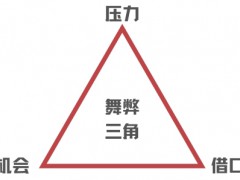据油价网1月27日报道,上周在达沃斯举行的世界经济论坛上,包括联合国秘书长安东尼奥·古特雷斯和国际能源署总干事法提赫·比罗尔在内的几位发言者对石油和天然气行业发表了严厉的言论。他们传达的信息很明确:我们需要停止生产石油和天然气来解决气候问题。
然而,在这种情况发生的同时,世界仍然需要能源,而石油和天然气仍然是我们需要能源的大多数情形的最佳能源形式。因此,随着需求预测(包括国际能源署预测)今年将超过供应增长率,新的钻探活动正在蓬勃发展。尤其是海外。
去年12月,Oilprice报告称,由于市场对Transocean、Valaris和Noble Corp等海上钻井承包商的服务需求强劲,其股价飙升,钻井平台的日费也大幅上涨。
现在,《华尔街日报》报道称,无论气候变化的演讲者试图描绘出什么样的末日景象,石油需求没有开始下降的迹象,海上钻探的速度可能会从目前的40万美元上升到每天50万美元。
“在过去的一年半里,所有人都想重新开始在海上钻井,他们想要使用最高效的钻井平台,突然之间,砰!”Noble Corp首席执行官Robert Eifler告诉《华尔街日报》,“八年后,高端钻船船队基本上都会得到充分利用。”
对去年海上钻井行业签署的最大交易的汇总,强化了人们对强劲复苏的看法。最大的一笔交易是卡塔尔能源公司与麦克德莫特签订的扩大北油田产能的合同,麦克德莫特表示这是其历史上最大的单笔交易之一。
卡塔尔还参与了2022年与意大利Saipem的第二大海上交易,再次将设备与技术应用于北部油田——这是可以理解的——因为卡塔尔计划将该国的液化天然气生产能力从每年7700万吨提高到1.1亿吨。这意味着海上钻井承包商将有很多工作要做。
ADNOC还在斯伦贝谢和哈里伯顿的帮助下提高其产能,这两家公司去年与阿联酋石油签订了两份价值约40亿美元的合同。沙特阿美也是如此,该公司已宣布计划将其石油日产量提高100万桶,至1300万桶。根据Evercore的说法,沙特阿拉伯和阿联酋的大部分新产能将来自海上开发。
尽管挪威此前承诺逐步减少石油和天然气产量,并转向可再生能源,但挪威也在考虑大力扩大其石油和天然气钻探活动,所有这些活动都在海上进行。本月早些时候,挪威石油部向25家公司颁发了47个新的勘探许可证。
据《华尔街日报》报道,巴西、圭亚那和苏里南的海上钻井也在蓬勃发展。巴西国家石油公司表示,将在2023年至2027年期间增加支出,大部分资金将用于勘探和生产。圭亚那正在享受一系列海上发现的成果,这些发现使这个小国的石油出口在2022年增长了164%,收入达到11亿美元。苏里南似乎正走在圭亚那通往石油财富的道路上,尽管它遇到了一些挑战。
分析师对海上钻井市场的预期似乎很乐观。油价比2019年更高,石油需求强劲,海上钻井承包商正在获得可观的利润。深水钻井尤其具有吸引力,因为世界上大部分未开发的石油资源都在那里。
根据Westwood Global Energy Group的数据,截至去年12月,全球约90%的海上钻井平台已经签约或已经在工作。《华尔街日报》在其报告中指出,这一比例高于五年前的60%。
海上钻井,尤其是深水钻井的需求激增,也恢复了对钻井船的需求,这些钻井船在疫情及其导致的行业低迷期间停产。钻井船重新投入运营的成本约为1亿美元,业主要求预付大部分费用。
因此,尽管要求关闭油气行业的呼声越来越高,但现实世界需要更多的石油和天然气,而该行业正在实现这一目标。从巴西海岸到北海和波斯湾,钻井承包商正在建造钻井平台,以便从海底开采更多的石油和天然气。分析人士称之为“超级周期”。
曹海斌 摘译自 油价网
原文如下:
Offshore Oil And Gas Is Back, Baby
At last week’s World Economic Forum gathering in Davos, several speakers had harsh words for the oil and gas industry, including UN head Antonio Guterres and the IEA’s chief Fatih Birol. Their message was clear: we need to stop producing oil and gas to solve the climate problem.
While this was happening, however, the world continued to need energy, and oil and gas continued to be the optimal form of energy for most of the things we need energy for. So, with demand forecast—including by the IEA—to surge this year above the growth rate of supply, new drilling is flourishing. Especially offshore.
In December last year, Oilprice reported that the stocks of offshore drilling contractors such as Transocean, Valaris, and Noble Corp were skyrocketing amid robust demand for their services, with day rates for drilling rigs surging as well.
Now, the Wall Street Journal is reporting that rates could top $500,000 per day, up from about $400,000 at the moment, with offshore drilling picking up everywhere as demand shows no signs it is about to start declining, no matter what apocalyptic visions climate speakers try to paint.
“Over the past year and a half, everyone started drilling again offshore, and they want to use the most efficient rigs and all of a sudden, bam!” Noble Corp chief executive Robert Eifler told the Wall Street Journal. “After eight years we basically have full utilization of the high-end drillship fleet.”
A roundup of the biggest deals signed in the offshore drilling industry last year reinforces the perception of a strong revival. The biggest deal was QatarEnergy’s contract with McDermott for expanding the production capacity at the North Field, which McDermott said is one of the largest single deals in its history.
Qatar was also involved in the second-largest offshore deal for 2022, with Italy’s Saipem, again for the North Field, which is understandable as the Qatari government plans to boost the country’s LNG production capacity from 77 million tons annually to 110 million tons. That means there will be a lot of work for offshore drilling contractors.
Adnoc is also boosting its production capacity with the help of Schlumberger and Halliburton, which got two contracts with the Emirati major last year worth some $4 billion. The same is true for Aramco, which has announced plans to increase its oil production capacity by 1 million barrels daily to a total of 13 million. According to Evercore, most of Saudi Arabia’s—and the UAE’s—new capacity will come from offshore developments.
Norway is also eyeing strong expansion of its oil and gas drilling, all of which takes place offshore, despite previous government pledges for a gradual reduction in oil and gas production and a shift towards renewable energy. Earlier this month, Norway’s petroleum ministry awarded 47 new exploration licenses to 25 companies.
Offshore drilling is booming in Brazil, Guyana, and Suriname as well, per the Wall Street Journal. Brazil’s Petrobras said it will boost spending between 2023 and 2027, with most of the money going into exploration and production. Guyana is enjoying the results of a string of offshore discoveries that have boosted the tiny nation’s oil exports by 164 percent in 2022, with revenues hitting $1.1 billion. Suriname is seemingly on Guyana’s path to oil riches, although it is meeting some challenges.
Analyst expectations about the offshore drilling market appear to be upbeat. Oil prices are higher than they were in 2019, oil demand is strong, and offshore drilling contractors are turning a nice profit. Deepwater drilling is particularly attractive since that’s where most of the world’s untapped oil resources are.
According to data from Westwood Global Energy Group, some 90 percent of the world’s offshore rigs were contracted to work or were already working as of last December. That’s up from about 60 percent five years earlier, the WSJ noted in its report.
This surge in demand for offshore drilling, especially in deep waters, has also revived demand for drillships that were put offline during the pandemic and the industry downturn it caused. Drillships cost about $100 million to put back online, and owners are demanding most of the money upfront.
So, despite increasingly loud calls for what effectively amounts to shutting down the oil and gas industry, the real world is demanding more oil and gas, and the industry is delivering. From the shores of Brazil to the North Sea and the Persian Gulf, drilling contractors are putting up rigs to pump more oil and gas from underneath the seabed. Analysts are calling it a supercycle.
免责声明:本网转载自其它媒体的文章及图片,目的在于弘扬石化精神,传递更多石化信息,宣传国家石化产业政策,展示国家石化产业形象,参与国际石化产业舆论竞争,提高国际石化产业话语权,并不代表本网赞同其观点和对其真实性负责,在此我们谨向原作者和原媒体致以崇高敬意。如果您认为本站文章及图片侵犯了您的版权,请与我们联系,我们将第一时间删除。







